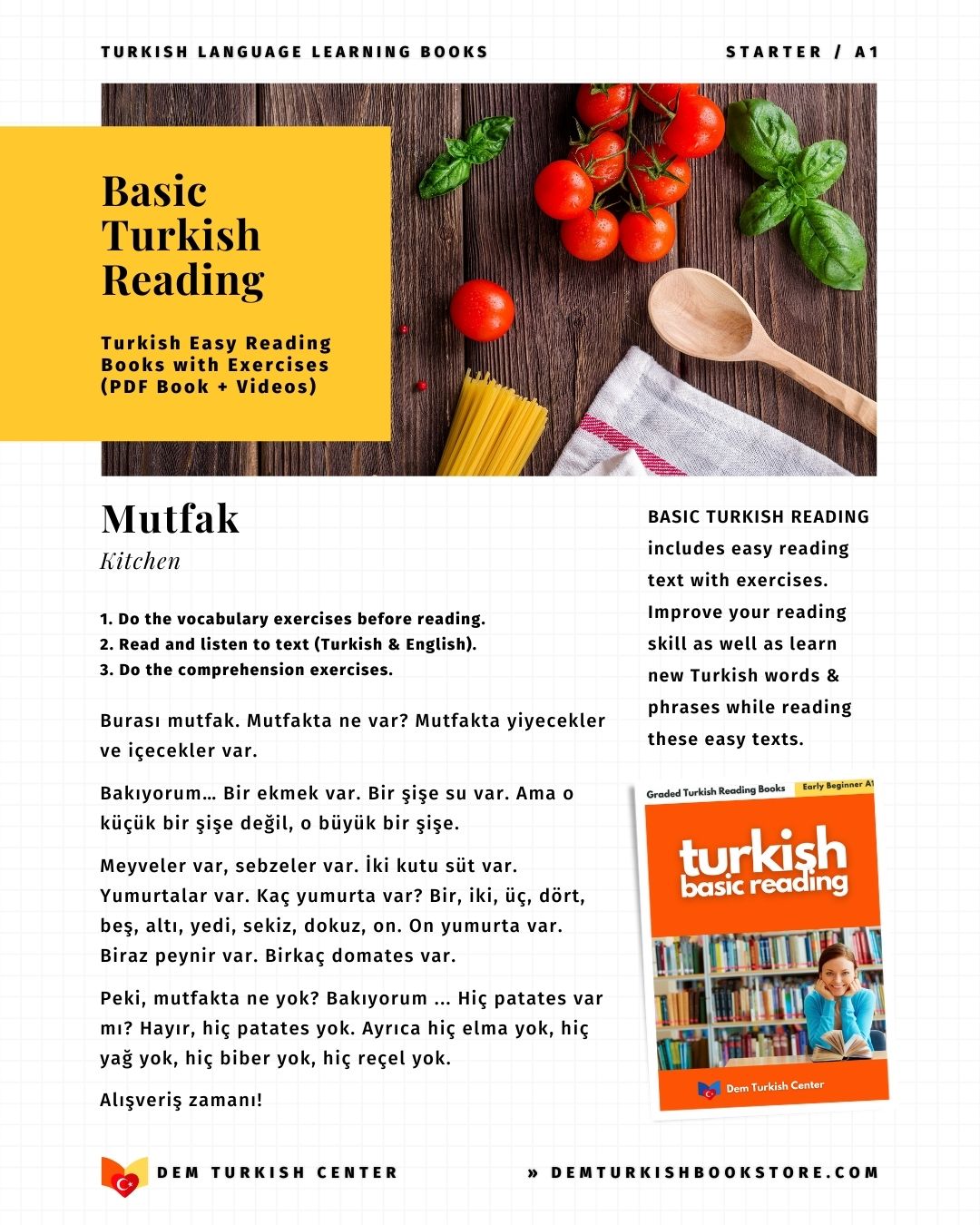
10 Signs You’re Not Fluent Yet (And How to Fix It)
Mastering a new language is undoubtedly a remarkable achievement, but attaining fluency can often seem just out of reach. While you may be capable of forming sentences or grasping the fundamentals, true fluency requires more than a solid grasp of vocabulary and grammar.
If you’re questioning whether you’ve fully reached fluency or still have some progress to make, here are 10 indicators that you’re not quite there yet—along with practical strategies to help you overcome these challenges.
Learning Turkish language? Become a member and get the full access to the bookstore - for 1 year!
10 SIGNS YOU'RE NOT FLUENT YET(And how to fix them)
1. You Rely Too Much on Translation
You often translate words and sentences from your native language instead of thinking directly in the target language.
How to fix it
Practice thinking in the target language. Start with simple thoughts and work your way up to more complex ideas.
Narrate your day in your head or describe objects around you in the target language.
2. You Struggle with Native Speed
Native speakers talk too fast for you to follow, and you frequently miss important details.
How to fix it
Train your ear by listening to podcasts, TV shows, or conversations at normal speed.
Use tools like YouTube’s playback speed feature to gradually increase listening speed as you become more comfortable.
3. Your Vocabulary Is Limited
You’re often searching for words or using generic phrases because you don’t know the exact terms.
How to fix it
Expand your vocabulary by learning new words daily and reviewing them with spaced repetition apps like Anki.
Focus on thematic vocabulary related to your interests or goals.
4. You Avoid Complex Sentences
You stick to simple sentences because you’re unsure how to construct more intricate ones.
How to fix it
Study sentence structures and practice forming complex sentences.
Read books or articles to see how advanced grammar is used, and try replicating those structures in your own speaking and writing.
5. You’re Uncomfortable with Idioms and Slang
Native speakers use idiomatic expressions or slang, and you either don’t understand them or use them incorrectly.
How to fix it
Immerse yourself in the culture through informal content like TV shows, YouTube channels, or social media.
Write down and practice idiomatic phrases you encounter, and don’t hesitate to ask native speakers for explanations.
6. Your Pronunciation Causes Confusion
People frequently ask you to repeat yourself or misunderstand what you’re saying due to pronunciation errors.
How to fix it
Focus on pronunciation early and often. Use apps like Forvo or YouGlish to hear native pronunciations, and mimic them.
Record yourself speaking and compare it to native speakers to identify areas for improvement.
7. You’re Hesitant to Speak
You avoid conversations in the target language or feel nervous about speaking in real-time.
How to fix it
Build confidence by speaking regularly. Join language exchange programs, participate in online meetups, or practice with language partners on apps like Tandem.
Remember, mistakes are part of the learning process.
8. You Rely on Context Too Much
You’re able to grasp the general idea of conversations but miss finer details or nuances.
How to fix it
Improve your comprehension by focusing on active listening. Practice transcribing short audio clips, and look up any words or phrases you don’t know.
This helps you catch subtleties and expand your understanding.
9. Your Grammar Needs Work
You frequently make grammatical mistakes, especially in complex sentences or when speaking under pressure.
How to fix it
Dedicate time to mastering grammar rules and practicing them in context.
Use grammar-focused apps or textbooks and try exercises that integrate grammar with vocabulary and real-life usage.
10. You Struggle to Adjust Your Speech Style
You can’t easily switch between formal and informal registers or adapt your language to different social situations.
How to fix it
Learn the cultural norms of the language and practice speaking in various registers.
Role-play different scenarios, such as a job interview (formal) or a casual chat with a friend (informal), to build flexibility.
Achieving fluency is a gradual process that requires patience and consistent effort. Identifying these signs is not a critique but an opportunity to focus on specific areas for improvement. By applying these practical fixes, you’ll be well on your way to mastering your target language.
Remember, fluency is not about perfection but about being able to communicate effectively and confidently in real-life situations. Keep practicing, and enjoy the journey!













